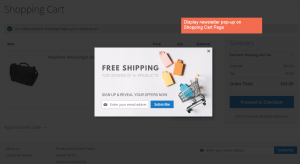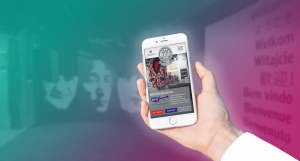— October 31, 2018

geralt / Pixabay
Conversion rate optimization (CRO) is the process of increasing the number of website visitors who take action. conversion rate optimization is performed with a combination of website analytics and user feedback. These conversions may be as simple as filling out a form but often aim to get people to become customers. CRO involves:
- Improving the user experience
- Ensuring you have a clear value proposition
- Optimizing your website for SEO
- And more.
What is Conversion Rate?
Your conversion rate is the total number of conversions, or the number of people who completed a call to action on your website, divided by the total number of visitors to your site.
For instance, if your site had 5,000 visitors, and 50 of those people converted (because they signed up for your newsletter or made a purchase) then you have a 1% conversion rate. That rate may sound low, but when you consider the average conversion rate of online shoppers worldwide as of Q2 2018 is 2.86%, it’s not as bad as it sounds.
It’s important to remember that conversion rates vary widely on a variety of factors including industry, offer, and trust/brand awareness. Naturally, if you’re brand new to the game and people don’t know who you are, or you don’t have enough social proof to convince them to trust you, you’ll have a harder time getting conversions.
Why Does Conversion Rate Optimization Matter?
You can always improve. No matter how many conversions you’re getting and how well your website is designed, you can do better. The better you do, the better results you’ll end up with. More customers is never a bad thing.
Paid advertising has its place in marketing, and while it can help start momentum, it’s not the long-term solution to your success. It’s only getting more expensive and more competitive. Spending more money is not the answer.
CRO helps you focus your efforts on getting more of the right kind of customers. You’re not trying to convert random people – just the ones that are already most likely to buy it.
CRO is free because you’re working with the traffic you already have to your website. You’re not spending money driving new visitors – just focusing on doing a better job with new users once they visit your site.
Customer acquisition costs are often high. Customer acquisition costs can increase up to 7x more to convert a new customer than it does to sell to an existing one. If you double your conversion rate, you halve your customer acquisition cost.
Building Your CRO Strategy
Identify Hurdles in your Conversion Funnel
Put yourself in the visitor’s shoes and look for things that are confusing or difficult. Confusing website design and layout could be why you’re not converting. Look at things like:
- Call to Action: Is it clear? Is it easy to find?
- Value Proposition: What does the customer perceive as the benefit? Is your site structured to where that is clear? Does your website clearly and quickly show how your value proposition meets the consumer’s need? Is there a sense of urgency that communicates why your consumers should take action now? Is there an incentive for them do so?
- Usability: Can users search and find what they are looking for? Is your e-commerce checkout process easy? How many clicks does it take for a user to get from the landing page to conversion? You can invest in usability testing to see how people are using your site if your analytics don’t provide clear indications of where problems are.
- Graphics: Are they relevant? Placed well? Cluttering or distracting?
- Text: Is it relevant? Too much? Cluttered layout?
- SEO Efforts: Is everything optimized for fast loading pages? Are your on-page efforts, such as alt tags, metadata, and so on working in concert with your off-page efforts?
- Do you have social proof, such as customer testimonials and user reviews?
Reach Out to Existing Customers
There’s no one better to tell you about potential issues than the people you’ve already converted. Consider using surveys to collect user feedback. Look for patterns in that feedback to find the other problems to fix.
Create Hypotheses to Test
Let’s say your goal is to increase the number of phone consultations. Though these are free, they are essential because they help you close the sale.
You hypothesize that adding testimonials may increase the number of consultations you schedule.
You decide to compare your conversion rates using split-testing to show some testimonials to a portion of the audience, but not the others.
You’ll measure the number of scheduled consultations from each page to see if you were correct.
But, that’s not the only possibility. Maybe you notice your bounce rate is on the rise, so you use your analytics data to find a favorite, yet under-optimized page on your site.
You could use some options here, such as an on-page survey to ask users what they’re looking for and whether they found it. You could install a heat map to see where customers are clicking.
Establish Your Baseline
Without data to show where you are, you won’t be able to tell when, if, and how you’ve improved. Rely on data from user analytics, surveys, and testing to establish where you are before the trial begins.
Design Your Tests
At this point, you’re going to use everything you’ve learned to develop your testing strategy. What areas are the most significant priority? Work methodically. Start small. Start with split-testing, making one change at a time, so you’ll know if it was your CTA placement or your addition of testimonials that made a difference.
Run the Tests
Run the tests. If you notice results looking good, don’t stop testing early merely because you think you’ve found the fix. It’s important to stick to your sample size consistently throughout testing so as not to potentially skew the data.
Compare the Results to Your Hypothesis
Measure the data from the test results and compare it to your baseline. Your baseline will tell you where to go next.
If the test was successful, you can either move onto your next concern or continue to refine this one to improve it even more.
If the outcome wasn’t successful, that’s okay. Just go back to the previous phase, look at the data again, and design another test. Despite the adverse outcome, you can still learn.
Repeat in Other Areas That Need Improvement
Continue creating hypotheses and tests. Optimization is not an end goal. Instead, it is an ongoing process.
Digital & Social Articles on Business 2 Community
(64)
Report Post



